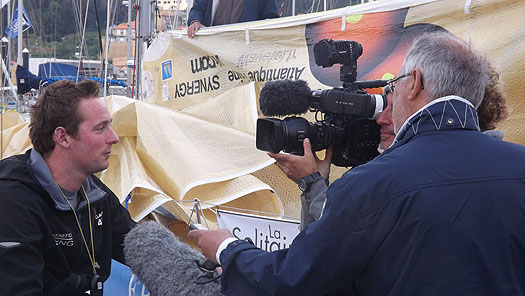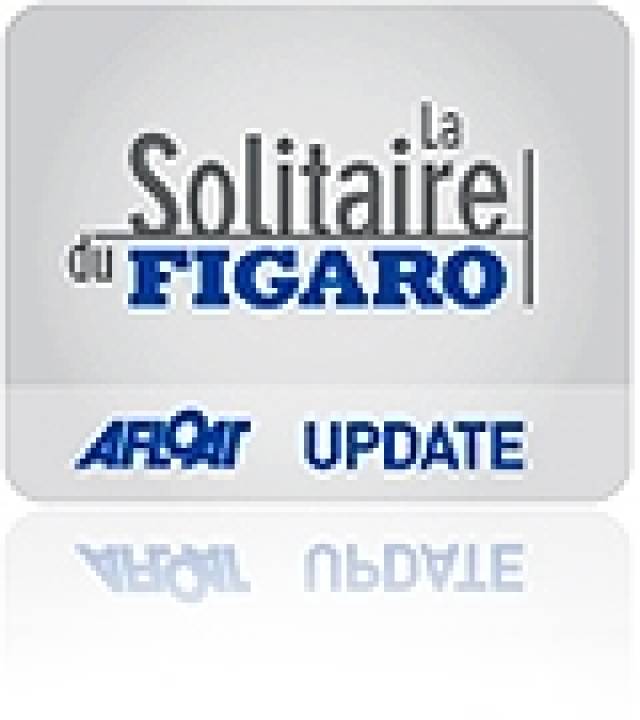Irish Figaro race rookie David Kenefick describes his first leg in which he finished 33rd from 41 starters
The first night I was exhausted. I guess it was the week-long build-up in Bordeaux, all the stress of moving from Bordeaux to Pauillac - the crowds, my family, media engagements, sponsors - all part of it but nevertheless exhausting. I knew I had to get a lot of sleep in early in this race as we wouldn't be doing much at the end.
But I wasn't in a great space off the start line and I took my time to get going. I actually hit something that wasn't on a chart in the river estuary. We'll get the boat out tomorrow and fix up the keel.
So bad start, tricky exit, hit something that wasn't on the chart in the river, then I waited and waited for the opportunity that I knew would be coming at Cape Finisterre, I got it and it worked out great. But then I made a mistake, the biggest mistake of my race and it cost me. It's a shame because I waited two days for my opportunity and when it came, I blew it.
The strategy for the race was: to get safely out of the Gironde in one piece without too much of a deficit, to sail extremely fast across the
Bay of Biscay to the point where a gybe in the freeing wind would line you up for the right trajectory around Cape Finisterre, to be ready for the big breeze that would hit the fleet at that point but to make sure not to cut the corner too tight and run out of wind in the lee. On top of that the small depression centred around the corner would mean a total shut down of wind and it would probably pay to be further west. Don't get trapped. The last part of the race sailed down the Portuguese coast would be sailed in light winds. The key message was that regardless of what happened inshore and how attractive it might look, eventually the offshore route would pay.
We had 35 to 40 knots of breeze off Finisterre. My mistake was I didn't sleep when I had the opportunity, I was too focused on keeping it together through the night in that breeze. I had never sailed in conditions like that for such a long time before. And my mistake was accumulating too much fatigue that would have to be dispensed with later on, and I couldn't afford to later on as that was the most important part of the race. I then started going for naps and I obviously went for one that was a bit too long. Probably woke up two hours later. I'm not sure what happened to my alarm it is usually really good at waking me up eight minutes after I've set it. I'm fresh as a daisy now!!!
I was very lucky but I was stupid. I'm not sure what happened, whether I just sat down for a few minutes or whether I'd planned to do it but I must have slept for two hours straight. When I woke up it was dark, I couldn't see anyone around me except fishing boats. I was completely disorientated.
"I couldn't see anyone around me except fishing boats. I was completely disorientated"
By now I was stuck in a hole in no wind. The bunch I was with got away from me at this point and of course I never saw them again. I believe Morgan Lagraviere, who was just behind me at the time finished 12th. I wouldn't have minded that!

David Kenefick meets the press after leg one
Anyway the important things are that the man and the boat are both in one piece. Everything worked fine. I'm really pleased to be here and fresher than a lot of others I can see around me so hopefully that means I'll do a good job on the next leg. Interestingly my buddy Jackson Bouttell who won the Rookie prize for this leg pointed out to me today that the three events we have already done this year plus the leg we have just finished are less in combined distance than what we have still to sail over the next three legs. I might need to avoid thinking about that too much!!!
Leg Two from Porto to Gijon (452 nautical miles) starts on Saturday 8th June.






























































